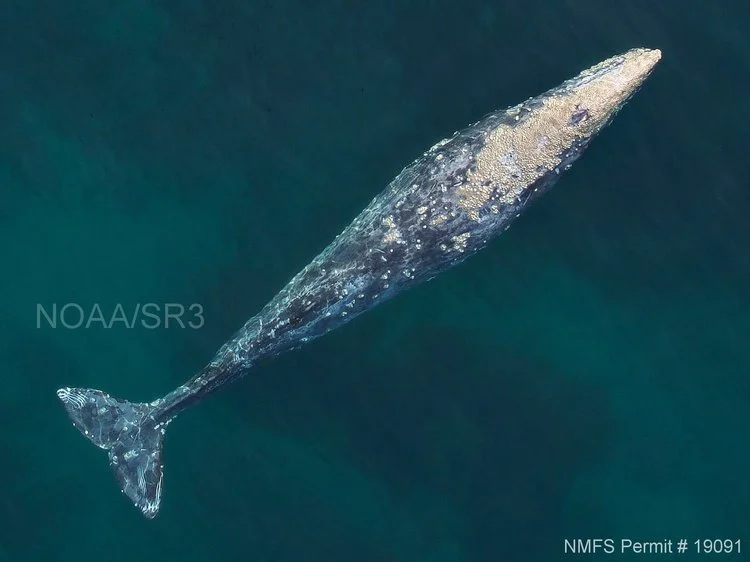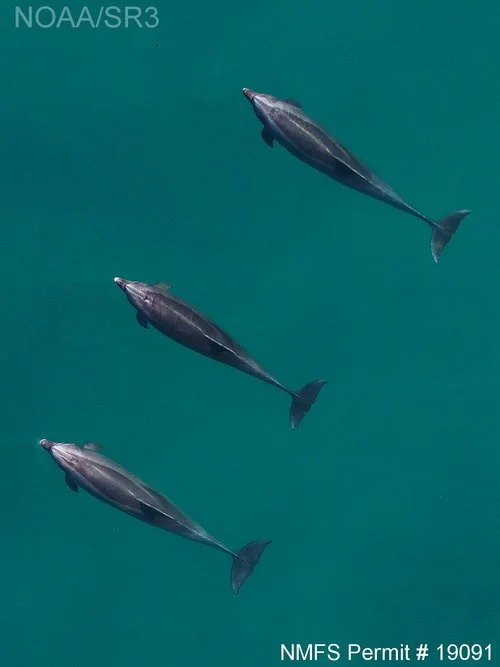2018/2019 Southern California Cetacean Survey Underway
SR3’s Dr. Holly Fearnbach is having a successful start to her 2018/2019 field effort in the coastal waters of San Diego County. For the second year, Holly is partnering with her colleagues from NOAA’s Southwest Fisheries Science Center to assess the condition of coastal cetaceans, with a focus on coastal bottlenose dolphins and gray whales. Aerial photogrammetry is being used to assess the health of individuals that have a nearshore coastal distribution and are therefore exposed to a range of potential anthropogenic threats. This year the team is using a new longer-endurance unmanned hexacopter (average flight time 17 min, max 23 min) to obtain vertical images to assess size and body condition of individuals using photogrammetry. Individual bottlenose dolphins photographed from the air will be matched to a long-term photo-identification catalog, allowing measurements to be linked to individuals of known age and sex. Length and condition of individual gray whales will be compared between the southbound migration to breeding grounds in Mexico in early winter and northbound migrations to feeding grounds in the North Pacific in late spring. So far, the team has flown a total of 24 flights over 40 individual bottlenose dolphins, one group of short-beaked common dolphins, one group of white-sided dolphins, two minke whales and two gray whales. The team has already photographed a number of the same bottlenose dolphins that they photographed in 2017/2018, allowing for measurements of longitudinal changes in body condition and growth for subadults.
This study is supported by the SeaWorld and Busch Gardens Conservation Fund, SR3, NOAA Southwest Fisheries Science Center, and Pacific Life Foundation
Aerial images of three resting bottlenose dolphins (right) and a gray whale during its southbound migration to breeding grounds in Mexico (left). Images were collected in the coastal waters off San Diego County for photogrammetry measurements with an unmanned hexacopter at >100ft altitude, with authorization under NMFS permit #19091.


